SERVICES
Service
Research on the Application of AUTOCERA Technology in Aerospace Reflectors
AUTOCERAResearch on the application of technology in aerospace reflective mirrors
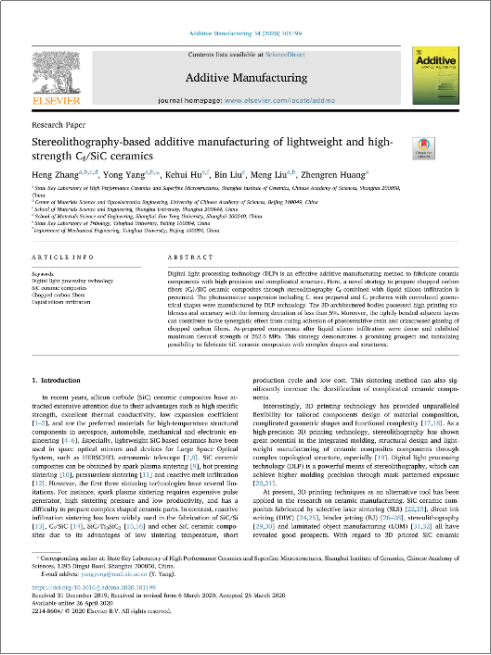
Professor Yang Yong from Shanghai Institute of Silicate, published in 2020
Additive Manufacturing
Lightweight high-strengthCarbon fiber/silicon carbideCeramic photopolymerization additive manufacturingManufacturing》
Abstract:A new method for preparing short-cut carbon fiber/silicon carbide ceramic composites using AutoCera technology combined with liquid silicon infiltration is proposed. A photosensitive suspension containingLiquid silicon infiltrationPreparationShort-cut carbon fiber/silicon carbide ceramiccomposites was prepared. A photosensitive suspension containingCf(Carbon fiber)was prepared, and complex geometric preforms were made usingBeijing Shiwai Technology'sAutoCera technology.The prepared 3D framework has high printing stability and accuracy, with a forming deviation of less than 5%.f(In addition, the tightly bonded adjacent layers can play a synergistic role in the adhesion of the photopolymer resin curing and the cross-stitching of short-cut carbon fibers. Afterward, the prepared components are dense, with a maximum flexural strength of.This strategy provides good prospects and possibilities for the preparation of complex shapes and structures ofsilicon carbide ceramic composites.Forming principle:As shown in Figure 1.1. The photosensitive resin and carbon fiber are mixed, and carbon fiber green bodies are printed using AutoCera-M, followed by vacuum debinding to obtain carbon fiber scaffolds. Subsequent liquid silicon infiltration treatment is carried out at 1650°C, and then cooled to room temperature in an argon atmosphere, followed by polishing and inspection.FigureLiquid silicon infiltration1.1a) Preparation schematic; (b) Different layer slice patternsFigure 1.2 is a micrograph of the carbon fiber preform, clearly showing the structure and state of the carbon fiber.262.6MPaFigure 1.3 shows carbon fiber preform green bodies of different forms. Figure 1.4 shows the completed silicon carbide mirror. Figure 1.5 compares the flexural strength in current research on 3D printed silicon carbide.Figure 1.2 Microstructure of carbon fiber preformFigure 1.3 Green bodies of carbon fiber preforms with different structures
Figure 1.4 Preparation process of silicon carbide mirrorFigure 1.5 Comparison of flexural strength in current3D printed silicon carbide researchThe AutoCera-M ceramic 3D printer from Shiwai Technology can adapt to high-viscosity silicon carbide ceramic slurries with added carbon fibers, achieving uniform slurry thin layer coating under the adjustment of process parameters for high-precision coating components. Additionally, for silicon carbide fiber slurries, which are highly absorbent and scatter, specially designed optical components can achieve sufficient penetration depth in the slurry to obtain adequate curing thickness. The industrial-grade Z-axis accuracy ensures the precision of each printed layer and the overall uniformity of the parts, preventing defect formation. Furthermore, the open full process parameter window of AutoCera-M can adapt to adjustments in slurry components, further providing conditions for optimizing final performance.
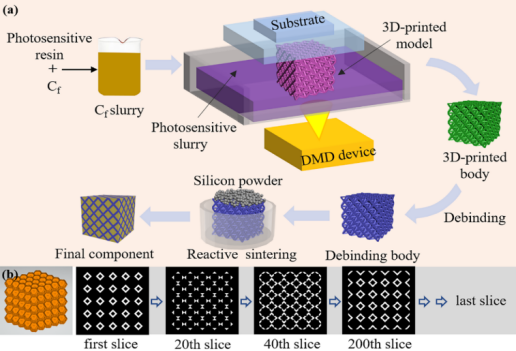
Figure 1.1 Schematic diagram of carbon fiber preparation; (b) Different layer slicing patterns
Figure 1.2 shows the microscopic electron microscopy image of the carbon fiber preform, which clearly shows the structure and state of the carbon fiber. Figure 1.3 shows carbon fiber preform blanks of different shapes. Figure 1.4 shows the completed silicon carbide mirror. Figure 1.5 Comparison of flexural strength in current 3D printed silicon carbide research.
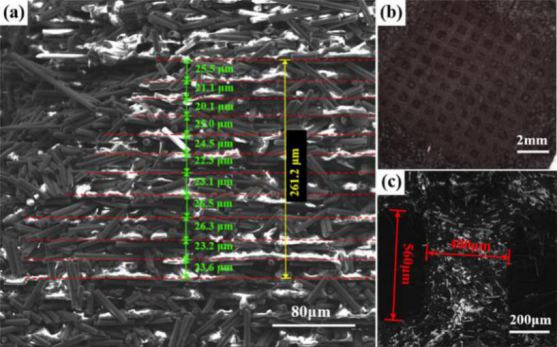
Figure 1.2 Microstructure of Carbon Fiber Preforms
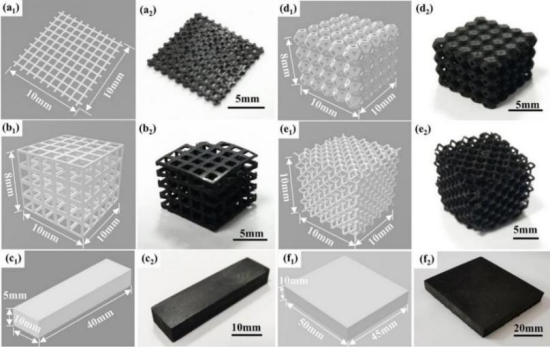
Figure 1.3 Carbon Fiber Preforms with Different Structures
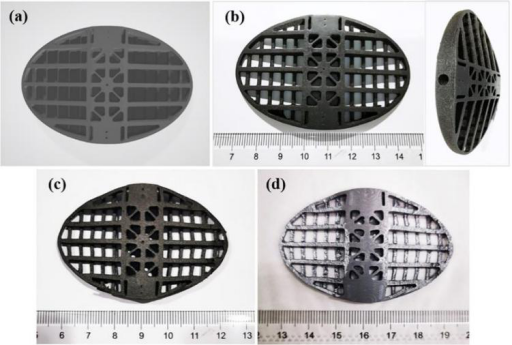
Figure 1.4 Preparation process of silicon carbide mirror
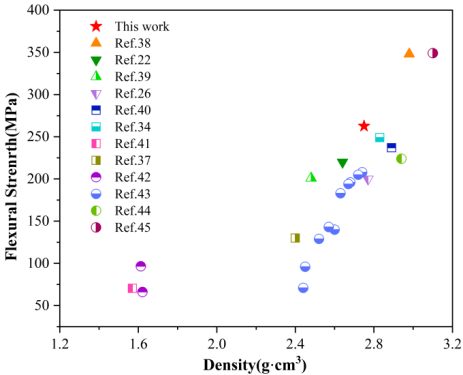
Figure 1.5 Comparison of flexural strength in current 3D printed silicon carbide research
The AutoCera-M ceramic 3D printer from Ten Dimensional Technology can adapt to high viscosity silicon carbide ceramic slurry with added carbon fibers. With the adjustment of process parameters for high-precision paving components, it achieves uniform coating of thin layers of slurry. In addition, for materials with high absorption and scattering such as silicon carbide fiber slurry, specially designed optical components can achieve sufficient penetration depth in the slurry to obtain sufficient curing thickness. The industrial grade Z-axis accuracy ensures the accuracy of each layer of printing and the overall uniformity of the parts, preventing the formation of defects. In addition, the full process parameter window of AutoCera-M is open, which can adapt to the adjustment of slurry components and further provide conditions for optimizing the final performance.
